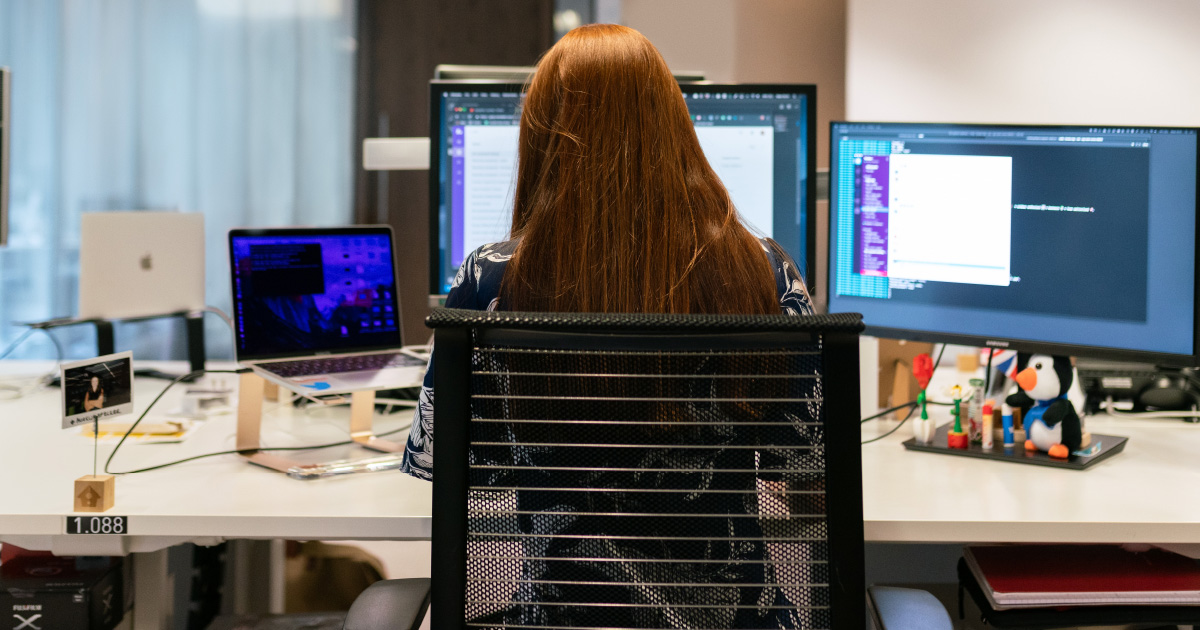Many people don’t think twice about the fact that you can use your phone with just one hand or easily push a stroller up a ramp to enter a building.
Yet the fact that you can do these things is no accident: it’s the result of accessible design. Accessible design, and its close relative, universal design, are processes in which products and services are built to be usable by all people and where the needs of people with disabilities are specifically considered. Together, these processes help ensure that our physical world is accessible to all.
But what about our digital world? Here to dive deeper into what accessible technology looks like and why it matters are our Software Development Engineers Maria Terekhina and Kat Perreira.
Why Does Accessible Design Matter?
Maria Terekhina: One in four Americans live with a disability — that’s 61 million people in the US alone. Additionally, what many people forget is that at some point we all experience changes in our abilities — from aging to pregnancy, to simply having to manoeuvre something with one hand because the other is occupied. Ensuring that all people can access technology benefits all of us — and as engineers, we have an obligation to uphold our values and do the right thing.
How Can We Ensure That Accessible Design Is a Priority?
Kat Perreria: By building it into the foundation of your businesses, education, and product. When I attended ADA Developers Academy, accessibility was part of our curriculum. And at Highspot, it’s a guiding principle we take very seriously, so it’s always part of our product conversations.
On a personal level, it’s also important to reframe your mindset. The more I read about accessibility and the more I engaged with diverse communities, the more I realised that it’s not an “us” versus “them” conversation. Accessibility actually makes the world easier for all of us — allowing us to interact with technology no matter our situation or circumstance.
Is the Conversation Around Accessibility Changing?
Maria: 2020 brought a lot of changes, but one unexpected benefit was bringing accessibility back to the forefront. With so many people suddenly working from home, it became critically important for digital spaces to be accessible for all employees.
As technology becomes more integrated into our lives, we risk developing everyday products that are inaccessible to some people. I hope the focus on accessibility keeps pace with innovation and that we don’t lose this momentum.
How Can Companies Invest in Accessibility?
Kat: My advice is to ensure that this job doesn’t fall on one person or role. To successfully build an accessible product, accessibility needs to be included in conversations at every level — from product managers and engineers to designers and QA testers. This ensures that everyone is thinking about it.
I also encourage my fellow engineers to develop and think with empathy. Keep learning, searching, and communicating with the broader community to understand what barriers people may face, and how to remove them.
Tell Us About Your Upcoming Sessions at AdieCon.
Maria: Accessibility is often put on the back burner, yet the internet was supposed to be an equalising force, something that everyone anywhere could use. That’s why we’re so excited to be talking to and inspiring a new generation of developers early on in their career at AdieCon. We hope to see you there!
Committing to Accessible Design
Ensuring our product is accessible to all is a critical part of our design and development process. Hear more about our approach and what it takes to build an accessibility product — and business — by joining Maria and Kat at AdieCon 2021.


